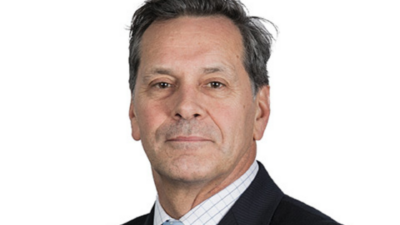Tick of approval for global small caps
(pictured: Nigel Douglas)
Global small caps tend to outperform large caps over most timeframes, but with slightly higher volatility, as most investors know. But for Australian investors, global small caps also have a distinct advantage over the domestic variety – they don’t have the same capacity problems
A recent study by asset consultant Nigel Douglas, principal of Douglas Funds Consulting, conducted jointly with fund manager Eaton Vance, says that for Australian investors a dedicated allocation to global small caps “is a real opportunity”. Melbourne-based Heuristic Investment Systems assisted with the data for the study.
The paper argues that there is a strong case for investing from both a top down and bottom-up perspective in global small caps, with up to a 5 per cent weighting in a typical balanced portfolio to give the necessary diversity within a global equities allocation.
Douglas reached this conclusion after analysing 15 years of data that found global small caps came only second to Australian large caps in terms of return for Australian investors (in Aussie dollar terms). Volatility, as you would expect, was higher than Australian large caps, but significantly lower than Australian small caps.
The nature of small caps compared with large caps is that they are typically more dynamic and tend to grow faster, Douglas observes. According to Eaton Vance, within those broad parameters, two types of companies offer good opportunities to deliver superior returns; which it calls “compounders” and “improvers”.
The former are those small companies that can “defend” their structural growth. They operate in markets where there are strong barriers to entry, they boast obvious competitive advantages, have scale-able businesses, and their products or services can be clearly differentiated in their markets.
By contrast, the latter benefit from structural change that can be new management, product development, regulation or corporate structure. In either case, the relative inefficiencies of the small cap universe mean there are opportunities with either “compounders” or “improvers” to achieve long-term capital appreciation.
Whatever the investment approach, there is a general consensus that the fund manager’s skill set is critical when it comes to global small caps. The paper discovered that the top quartile of managers in this sub-class consistently beat the index by about three per cent (gross of fees).
The evidence shows that global small caps, on average, outperformed global large caps by about 0.8 per cent a year, consistently, over the past 20 years with their respective volatility not that dissimilar. Which adds up to a lot of money.
The other factor at play is the capacity issue for Australian small caps. Larger super funds can struggle to invest in Australian small-cap funds because of size and liquidity. Most domestic small-cap managers close their funds to new money at less than $1 billion. However, big super funds typically like to invest at least $100-500 million in new mandates, which would mean that they would swamp an individual Australian small-cap manager.










